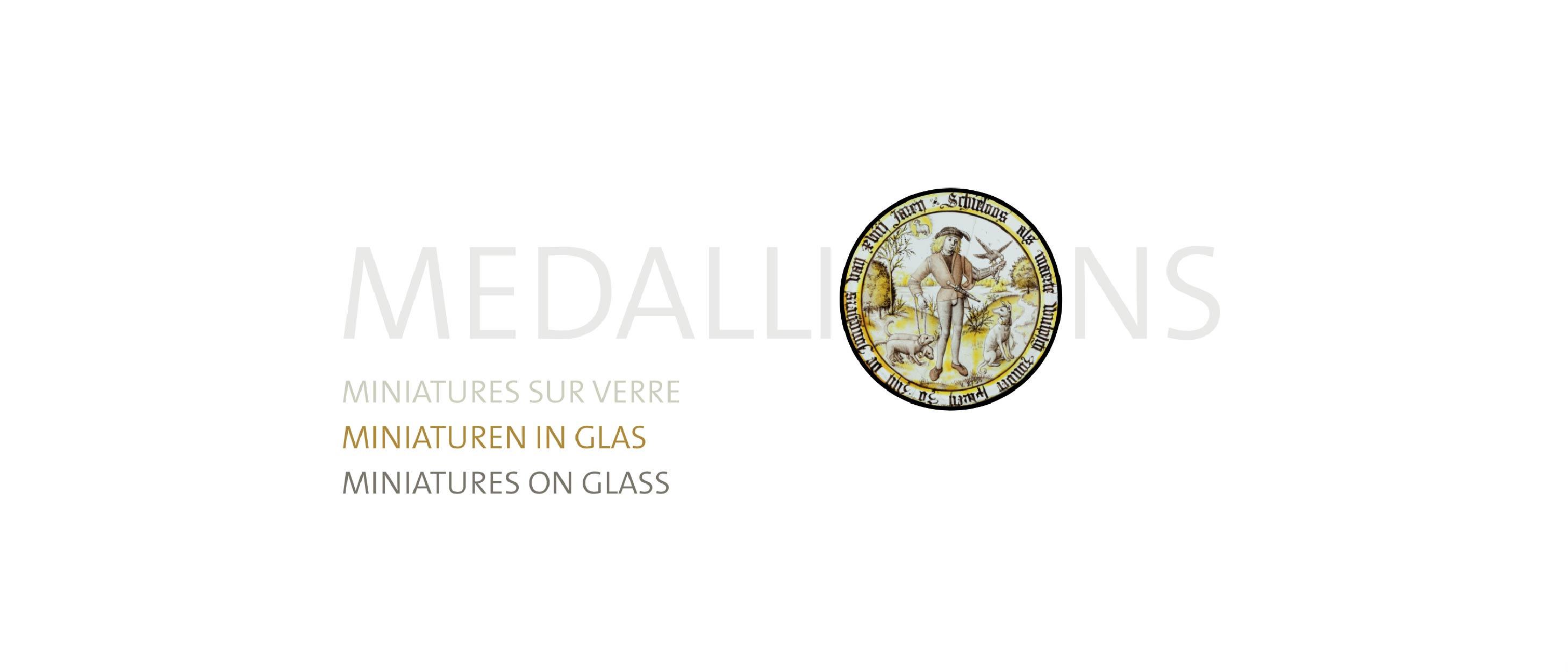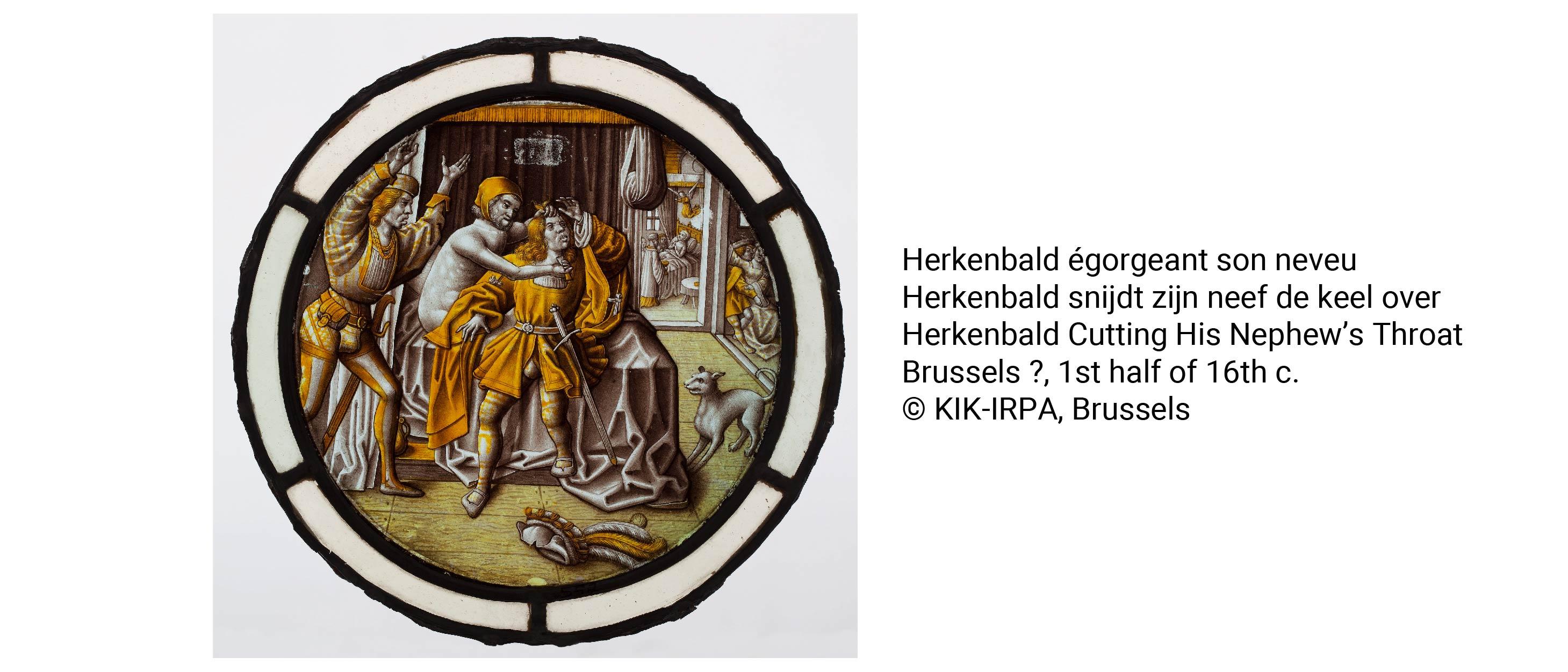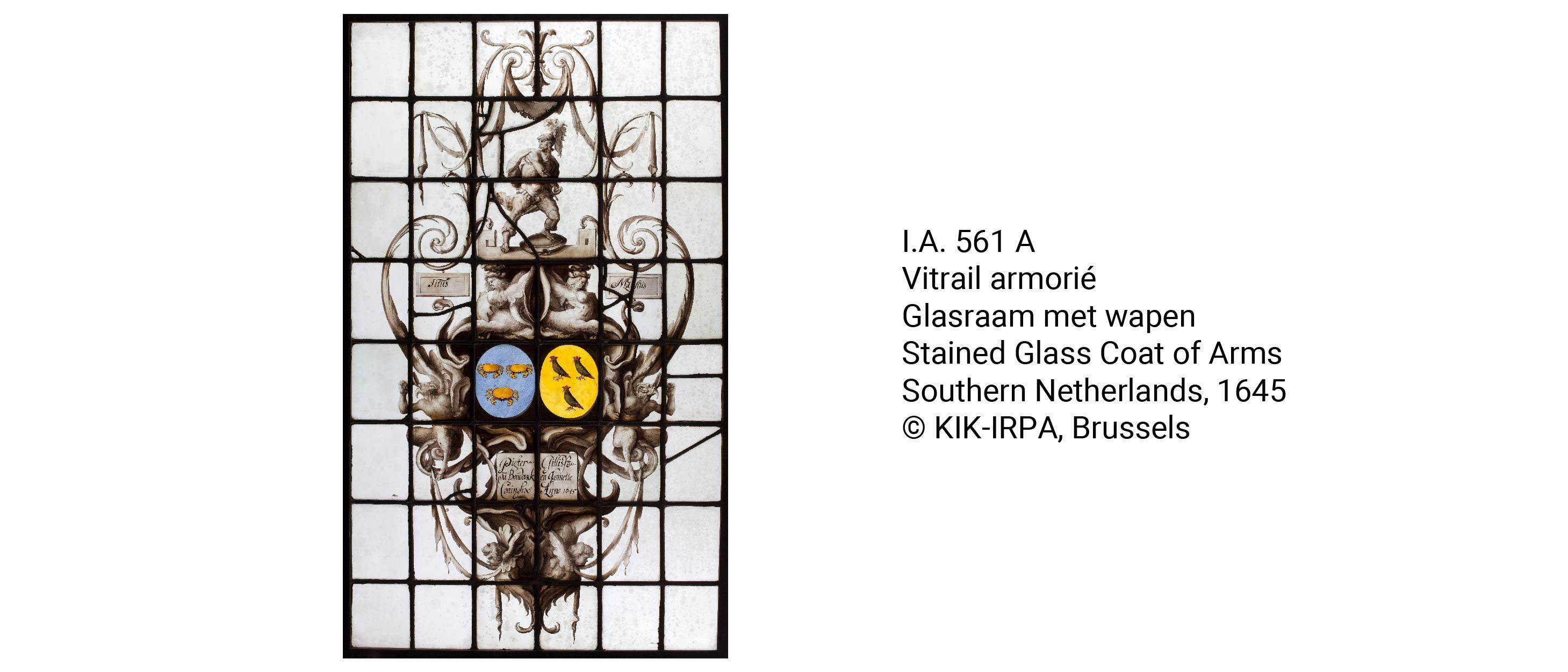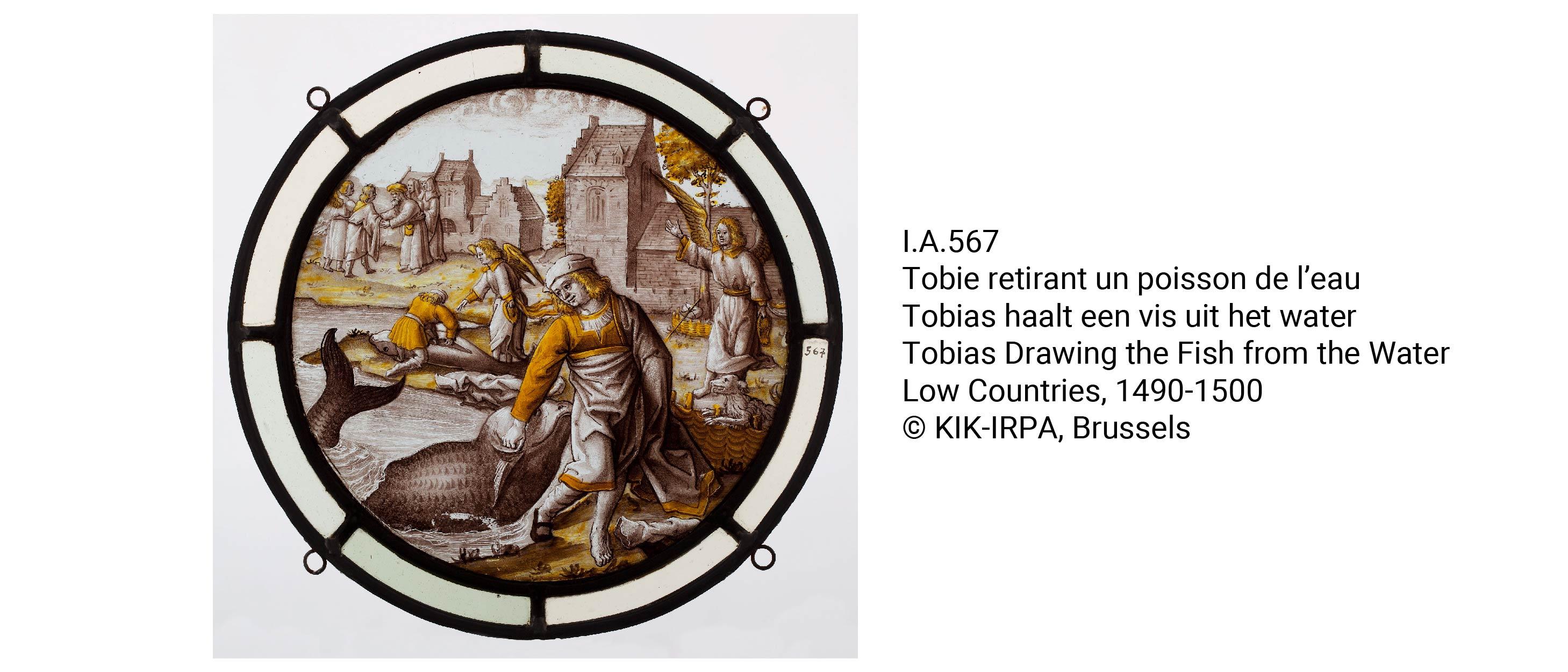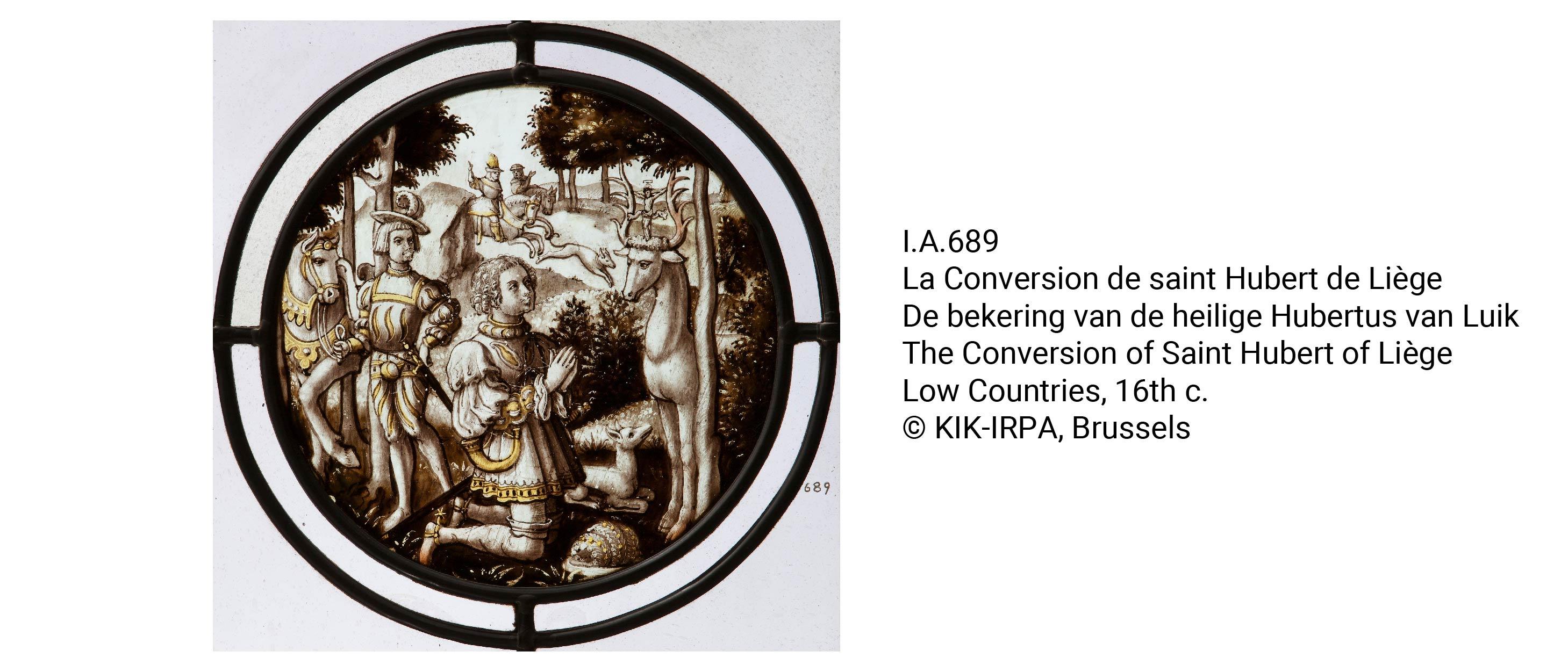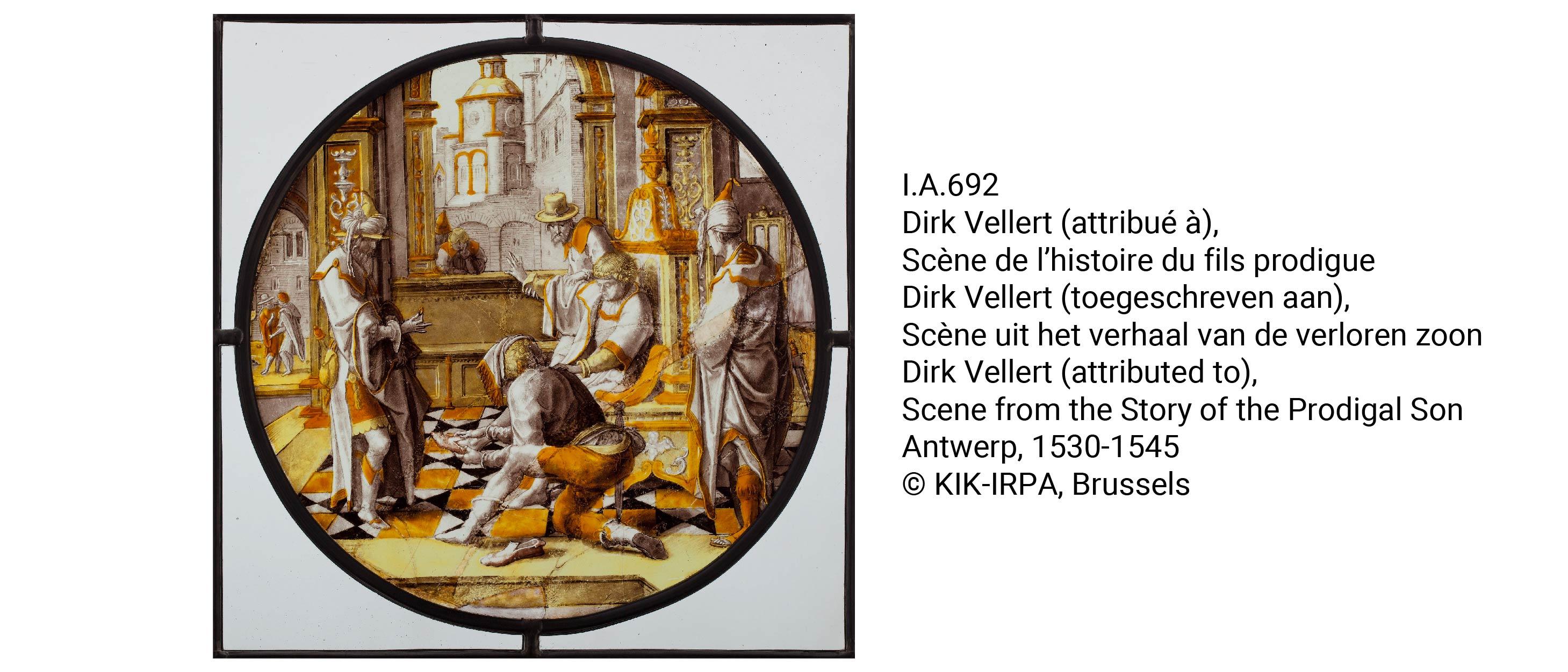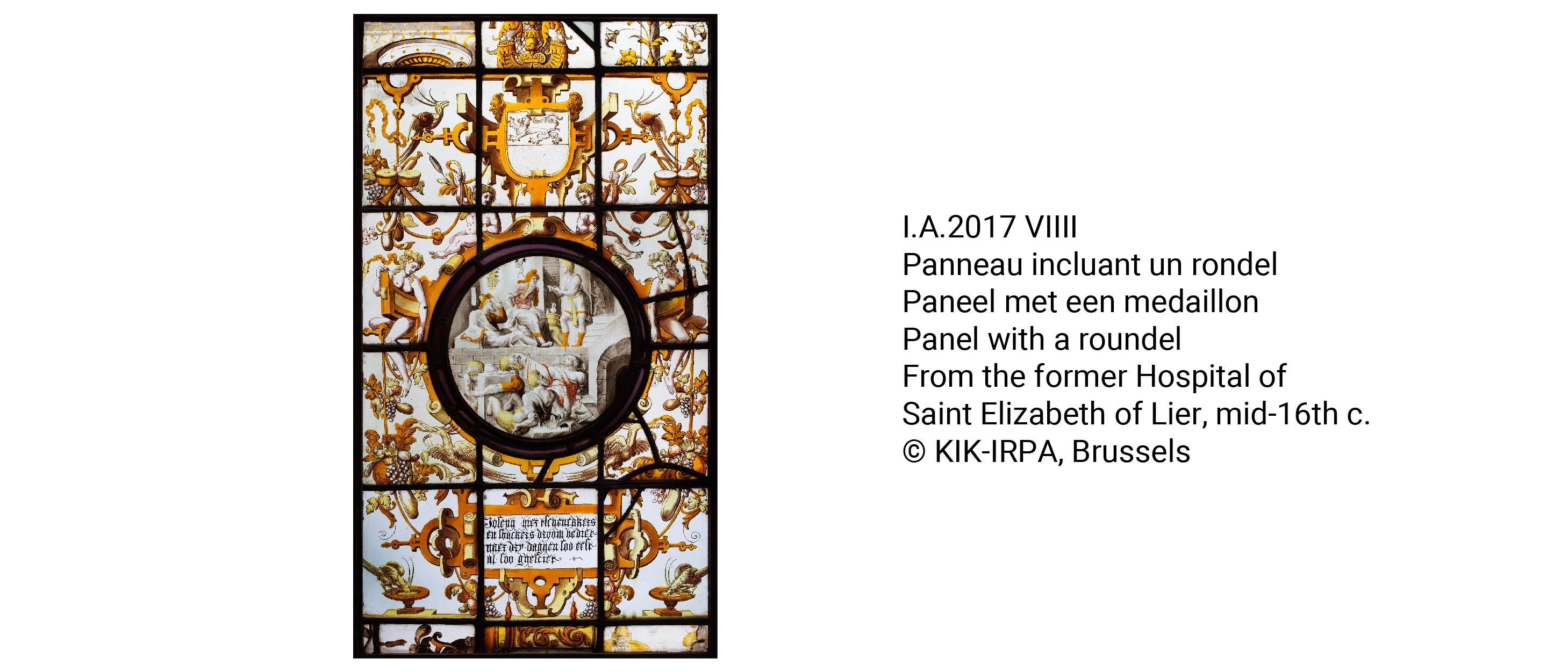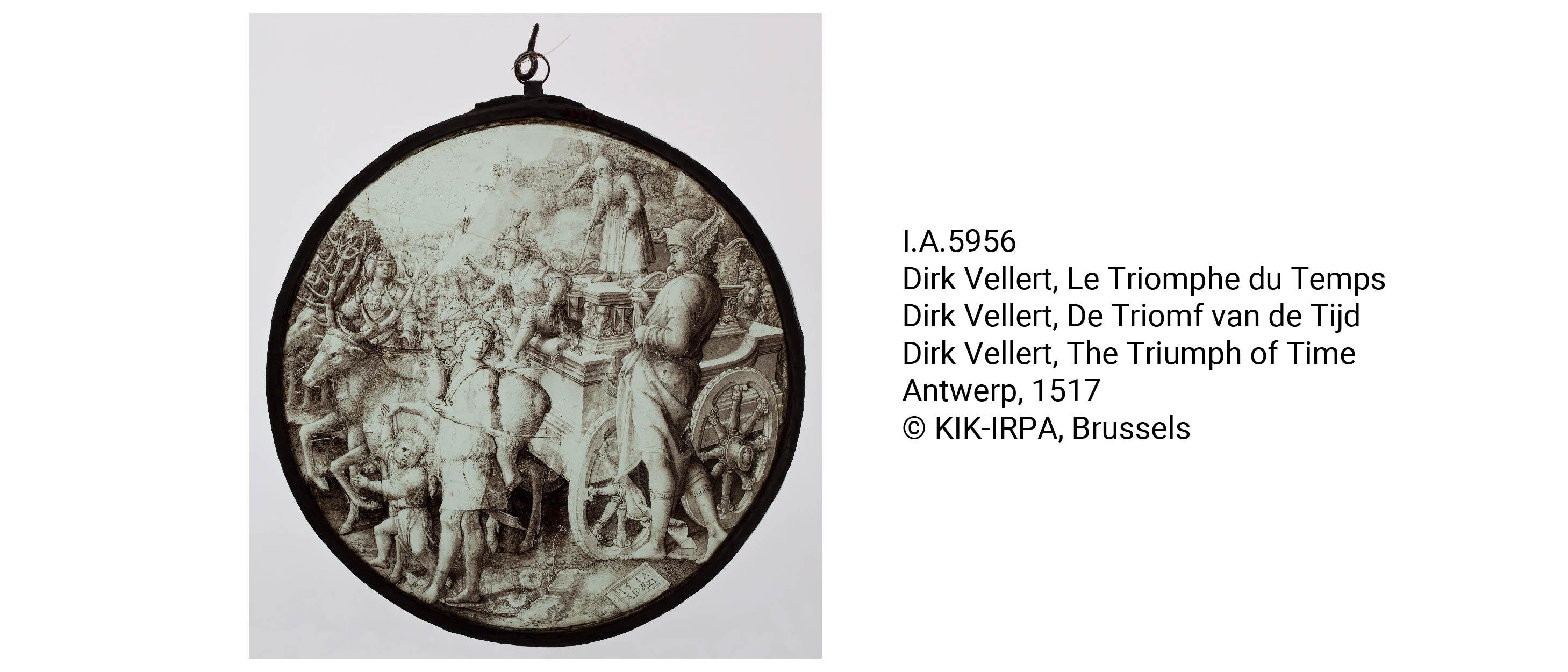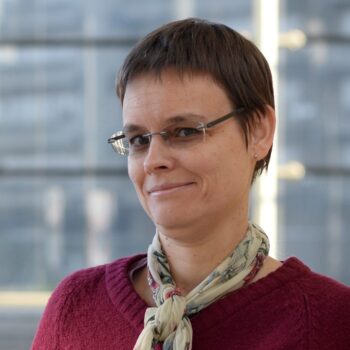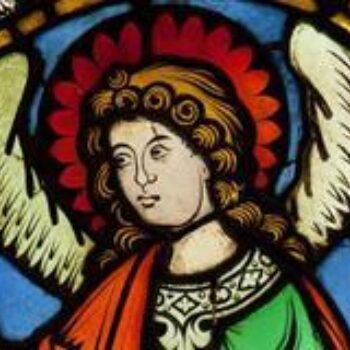Fenestra project studies glass windows collection of Brussels' Art & History Museum
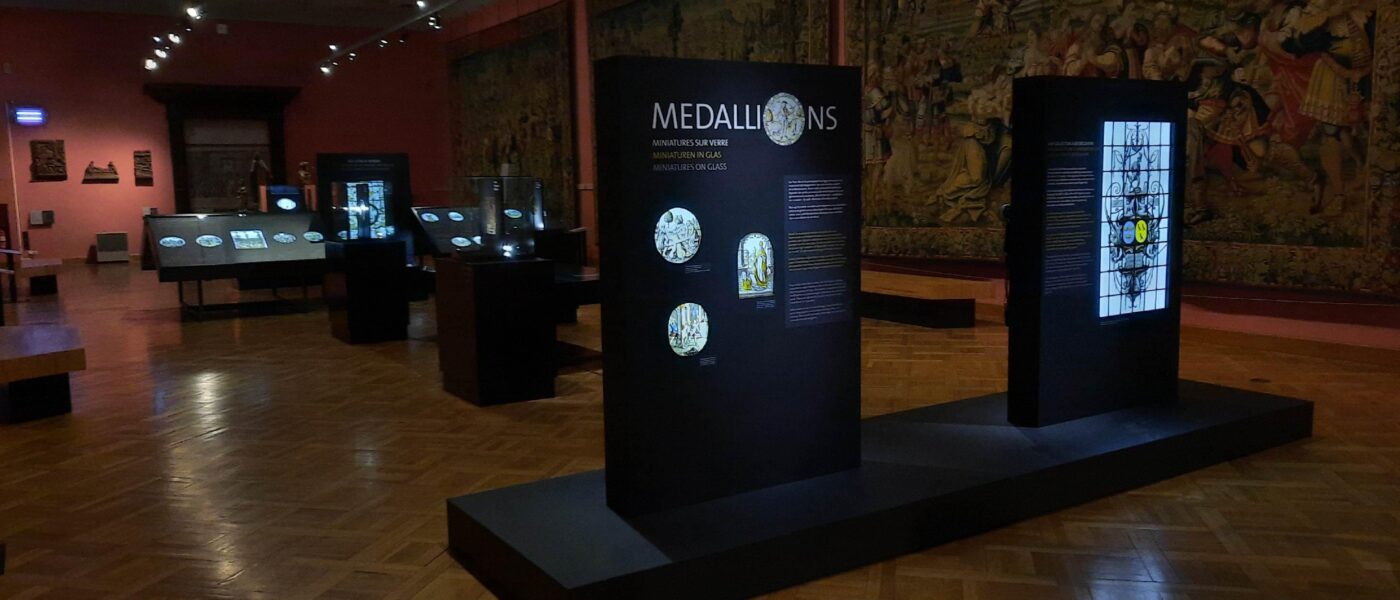
The Art & History Museum (A&H) in Brussels is exhibiting a unique collection of stained-glass windows dated from the 15th to the 17th century. The so-called 'roundels' formed the subject of the recently finished ‘Fenestra’ project (2017-2021) that was funded by Belspo and coordinated by Vrije Universiteit Brussel and B-PHOT professor Wendy Meulebroeck.
In this interdisciplinary project 'Fenestra', researchers from different disciplines joined forces to examine the precious glass panels in various ways including humanities and social sciences; applied sciences and conservation. At VUB side, B-PHOT collaborated with Prof. Karin Nys (Department of Art Sciences and Archaeology). The focus of the project was the study of so-called ‘roundels’. These small panels of colourless glass decorated with paint layers, were in most cases round or oval shaped and started to become popular in Europe from the 15th century onwards. Their small size made them ideal to be included in religious stained-glass windows as well as in profane windows. During the 16th and 17th century, the production of these roundels formed an important industry in the (Southern) Low Countries. Unfortunately, and this in contrast to other pieces of art like paintings or tapestries, little information remains today regarding the technological evolution of roundels and the relation to socio-cultural encounters and confrontations.
VUB PhD student Mathilde Patin applied absorption spectroscopy as a first-line non-destructive analysis technique. This with the main goal to get a better understanding of the properties of the bare glass and the applied silver stain technology. Starting from these results, the VUB team succeeded in defining a first photonics-based non-destructive tool that allows us to date a panel to the earlier (15th-early 16th century) or later (late 16th-17th century) period. This is possible because of an existing difference in iron content in the bare glass which is linked to the applied sources and/or the glass technology.
Secondly, we showed that absorption spectroscopy can replace the destructive LA-ICP-MS technique to study cobalt impurities in the glass. A third and final optical tool that has been developed, relates to the analysis of the silver stain. In this process, silver ions diffuse into the glass forming silver nanoparticles. Light scattering on these particles lead to a colour palette going from yellowish green towards dark orange. Factors that influence the size, the penetration depth and the concentration of the nanoparticles are the applied silver salt, the glass matrix, the firing temperature and time. The focus of our research was to link the optical information with the applied production parameters.
In the final phase of the project, the photonics-based tools were applied to the roundel collection providing us insights on the glass consumption in the Low Countries and chronological evolutions in the silver stain technology. By combining the analytical and the stylistic research (performed by Dr. Isabelle Lecocq - KIK-IRPA), we will finally also be able to study differences in applied sources and silver stain technology on a geographical level focussing on pieces originating from workshops located in for example Antwerp, Bruges, Brussels, Leuven or Liège. A final interdisciplinary aspect concerned the study of the relation between the stylistic composition and the quality of the used materials. The tools and knowledge obtained in this project expand well beyond Fenestra as they can easily be used to study other collections in a non-destructive way.
Read more about the study
Medallions - Miniatures on glass
From July 1st 2021 onwards, a selection of the studied panels are exhibited in the exposition ‘Medallions – miniatures on glass’ in the Art & History Museum in Brussels. The exposition forms part of the permanent collection and stays in place until the temporary closing of the museum (for renovation) which is planned in the course of 2022. The Fenestra researchers in front of the exposition from left to right: Valérie Montens, Mathilde Patin, Isabelle Lecocq, Wendy Meulebroeck and Adeline Vanryckel (Prof. Karin Nys is missing on this photo).
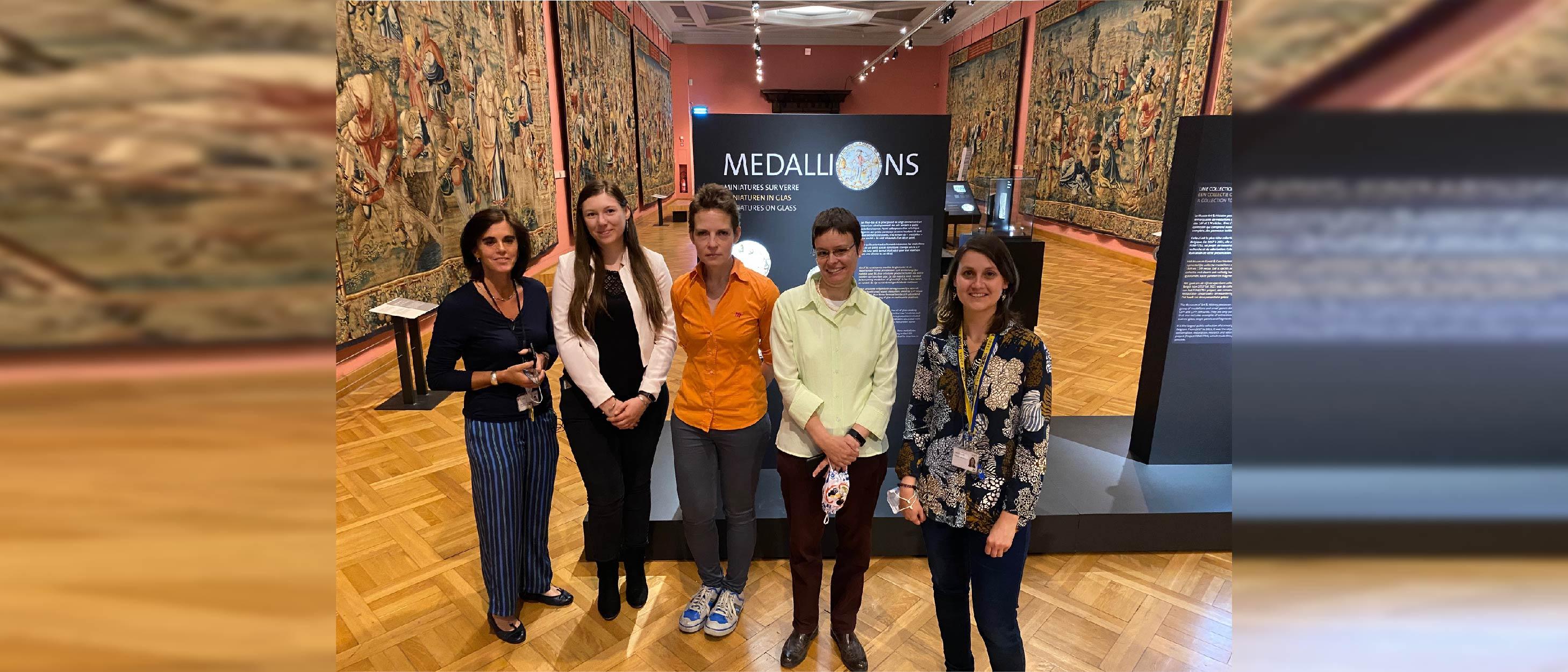
The exposition starts with an illustration of the technological and artistic evolutions of the painted roundels. In a second part, the visitors learn about the different artistic compositions that were common practice including both religious and profane themes. Finally, a link is made with the existing production centres located in the Low Countries. Along the exposition, references are made to the interdisciplinary research in the format of video testimonials given by Dr. Valérie Montens (conservator of the collection - RMAH), M.A. Mathilde Patin (Brussels Photonics – VUB), Adeline Vanryckel (conservator – RMAH) and Dr. Isabelle Lecocq (art-historian – KIK-IRPA). In 2022, a Corpus Vitrearum checklist publication illustrating the most important glass windows from the RMAH collection, will be published by Brepols.
Report & interview:
Detailed pictures:
Related people


